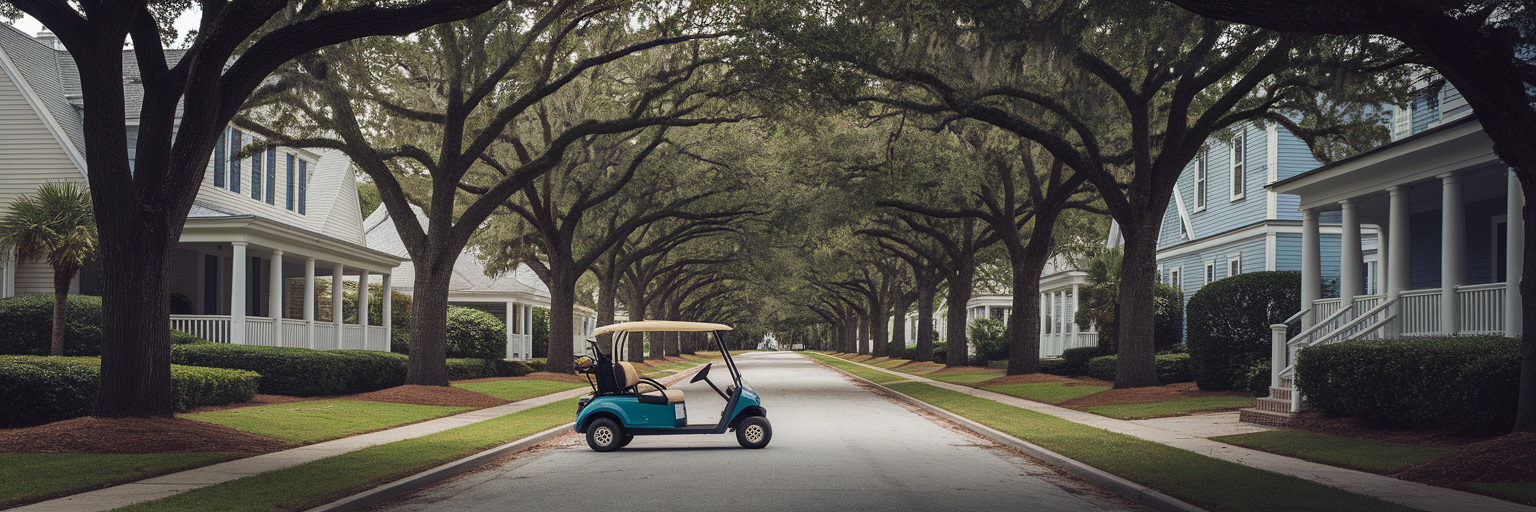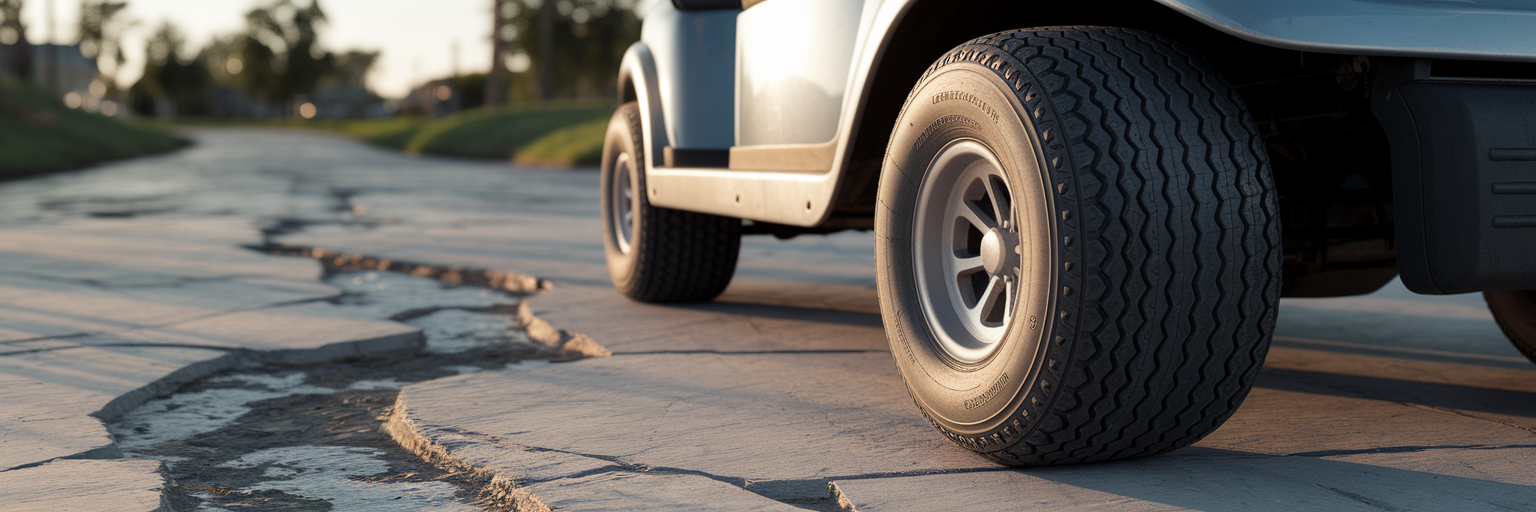Golf carts are a familiar sight in Charleston’s master-planned communities, from Daniel Island to Kiawah. Their casual nature, however, can obscure the serious legal standards that apply when an accident happens.
The Four Elements of Negligence in South Carolina
The legal system doesn’t determine fault based on feelings or assumptions. Instead, it relies on a clear, four-part test. Think of a grocery store owner who knows a spill has occurred. They have a duty to clean it up to protect shoppers. If they fail to do so and someone slips, the store has likely been negligent. The same logic applies to vehicle incidents.
Successfully proving negligence in an accident SC requires demonstrating these four elements:
- Duty of Care: This is the legal obligation to act with reasonable caution. In a Charleston residential community, this means obeying HOA speed limits, watching for pedestrians on shared paths, and operating the cart safely around others.
- Breach of Duty: This occurs when a person or entity fails to meet their duty of care. A driver texting while operating a cart or an HOA failing to fix a known pothole are clear breaches.
- Causation: The breach must be the direct cause of the injuries. If a driver runs a stop sign and hits a pedestrian, the link between the breach and the harm is clear.
- Damages: The victim must have suffered actual, measurable losses. These damages can include medical bills, lost wages from being unable to work, and other quantifiable costs resulting from the injury.
Without all four of these components, a personal injury claim cannot succeed. Each piece builds on the last to form a complete picture of legal responsibility.
Common Scenarios Leading to Golf Cart Collisions
The transition from a peaceful community cruise to a serious accident often happens in seconds. While the legal framework provides the rules, understanding the common real-world causes helps illustrate how easily a duty of care can be breached. These scenarios are frequent contributors to golf cart incidents in the Lowcountry.
- Driver Inattention and Distraction: The social, relaxed atmosphere of a golf cart ride creates a false sense of security. We’ve all seen it, a quick glance at a smartphone to check a message is all it takes to miss a child darting into the path or a car backing out of a driveway.
- Speeding and Reckless Operation: Golf carts are not built for speed. Their high center of gravity and simple suspension make them unstable, especially on the uneven brick or gravel paths common in many Charleston neighborhoods. A sharp turn taken too quickly can easily lead to a rollover.
- Overloading and Unsafe Modifications: Piling too many passengers onto a cart designed for four raises its center of gravity, making it top-heavy and difficult to control. It also puts immense strain on the brakes. Unapproved modifications, like lift kits or more powerful engines, can further compromise the vehicle’s stability and safety.
- Inexperienced or Underage Drivers: In resort communities, it’s common to see unlicensed teenagers behind the wheel. Lacking the road experience and mature judgment of a licensed driver, they are less equipped to anticipate hazards or react appropriately in an emergency.
These actions are not just poor choices. As we will see, they represent direct violations of an operator’s legal duties.
The Operator’s Legal Responsibilities
Operating a golf cart involves more than just steering and pressing a pedal. The person behind the wheel assumes specific legal obligations the moment they start moving. Failing to meet these responsibilities is often the central issue in an accident claim.
First, a driver must adhere to all rules. This includes not only South Carolina state traffic laws that apply to golf carts on public roads but also the specific regulations set by a community or HOA. Violating a posted 15 mph speed limit or driving on a path designated for pedestrians is strong evidence of a breach of duty.
Second, an operator has a strict duty to avoid impairment. Driving a golf cart under the influence of alcohol is just as illegal and dangerous as driving a car while impaired. The casual setting does not reduce the legal consequences, which can be severe.
Finally, the driver is responsible for passenger safety. Since golf carts lack doors, airbags, and often even seatbelts, the operator has a heightened duty to ensure all passengers are seated securely before moving. An operator who allows passengers to stand or hang off the side is failing this fundamental responsibility. Understanding how these duties apply to your situation is a key part of any claim, and our Charleston personal injury lawyer can clarify the specifics of your case.
Liability of Property Owners and HOAs
Sometimes, the fault for an accident extends beyond the driver. Property owners and Homeowners Associations (HOAs) also have a duty to maintain a safe environment for residents and guests. When they fail, their inaction can be a direct cause of a collision, creating a case for Charleston HOA liability.
This responsibility includes the maintenance of common areas. An HOA that neglects to repair a large pothole, trim overgrown bushes that create a blind corner, or replace burnt-out lights along a community path may be held liable if these conditions contribute to a crash. The expectation is that they will address known hazards in a reasonable timeframe.
Furthermore, if an HOA or community club rents out golf carts, they have a duty to ensure those vehicles are safe. This means performing regular maintenance on brakes, tires, and steering systems and keeping detailed service records. Providing a cart with known mechanical issues to a renter is a significant breach of duty.
Proper signage is another critical responsibility. HOAs must provide adequate warnings for potential dangers like sharp turns, steep inclines, or intersections where carts cross paths with cars. A missing stop sign at a known dangerous crossing could place liability directly on the property manager. Distinguishing between operator and owner fault is crucial.
| Area of Responsibility | Example of Operator Negligence | Example of HOA/Property Owner Negligence |
|---|---|---|
| Vehicle Operation | Speeding, texting while driving, or driving while impaired. | N/A (Does not operate the vehicle). |
| Vehicle Condition | Ignoring a known issue with a personally owned cart. | Renting out a cart with faulty brakes or worn tires. |
| Pathways & Environment | Driving too fast for the conditions (e.g., on a wet path). | Failure to repair a large pothole or trim a blind corner. |
| Rules & Warnings | Ignoring a posted ‘No Golf Carts’ sign. | Failure to install a ‘Stop’ sign at a dangerous intersection. |
Note: This table illustrates common examples of where fault may lie. In many accidents, liability can be shared between multiple parties depending on the specific circumstances.
Key Steps for Gathering Crucial Evidence
After a collision, the scene can be cleared and memories can fade surprisingly quickly. Knowing what to do after a golf cart crash is essential for protecting your rights. The evidence you collect in the minutes and hours following the incident can become the foundation of your claim.
- Document the Scene Immediately. Before anything is moved, use your smartphone. Take photos and videos from multiple angles showing the positions of the carts, property damage, visible injuries, and the surrounding environment. Capture any hazards like potholes, obstructed signs, or poor lighting.
- Identify Witnesses and Involved Parties. Talk to everyone present. Get the names, phone numbers, and addresses of the other driver, passengers, and any bystanders who saw what happened. Their objective accounts can be invaluable later.
- File an Official Report and Seek Medical Care. Report the accident to community security or the local police department. An official report creates a critical, time-stamped record of the incident. Just as importantly, see a doctor right away, even for what seems like a minor injury. This medical record formally links your injuries to the accident. For formalizing witness accounts, trusted mobile notary services can help prepare sworn statements or affidavits.
- Understand South Carolina’s Comparative Negligence Rule. This rule is a critical factor when considering suing for a golf cart injury. In South Carolina, you can only recover damages if you are found to be 50% or less at fault for the accident. If you are determined to be 51% or more responsible, you cannot collect anything. This makes proving the other party’s negligence absolutely essential.
Once you have gathered this initial information, the next step is to understand your legal options. You can contact us to schedule a free consultation and discuss the details of your case with our legal team.
How Expert Analysis Can Strengthen Your Claim
When fault is heavily disputed or the physics of a crash are complex, witness testimony and photos may not be enough. In these situations, an accident reconstructionist can provide the scientific analysis needed to prove what happened. This expert uses evidence from the scene, vehicle damage, and physics principles to determine factors like speed, impact angles, and driver actions with scientific certainty.
This level of analysis is not required for every case. However, it becomes vital when an opposing party denies responsibility or claims the accident was unavoidable. A skilled golf cart accident lawyer in Charleston will know when to engage such an expert. In these complex situations, our attorneys who handle vehicle accidents often work closely with reconstructionists to build the strongest possible case and demonstrate fault clearly and definitively.


